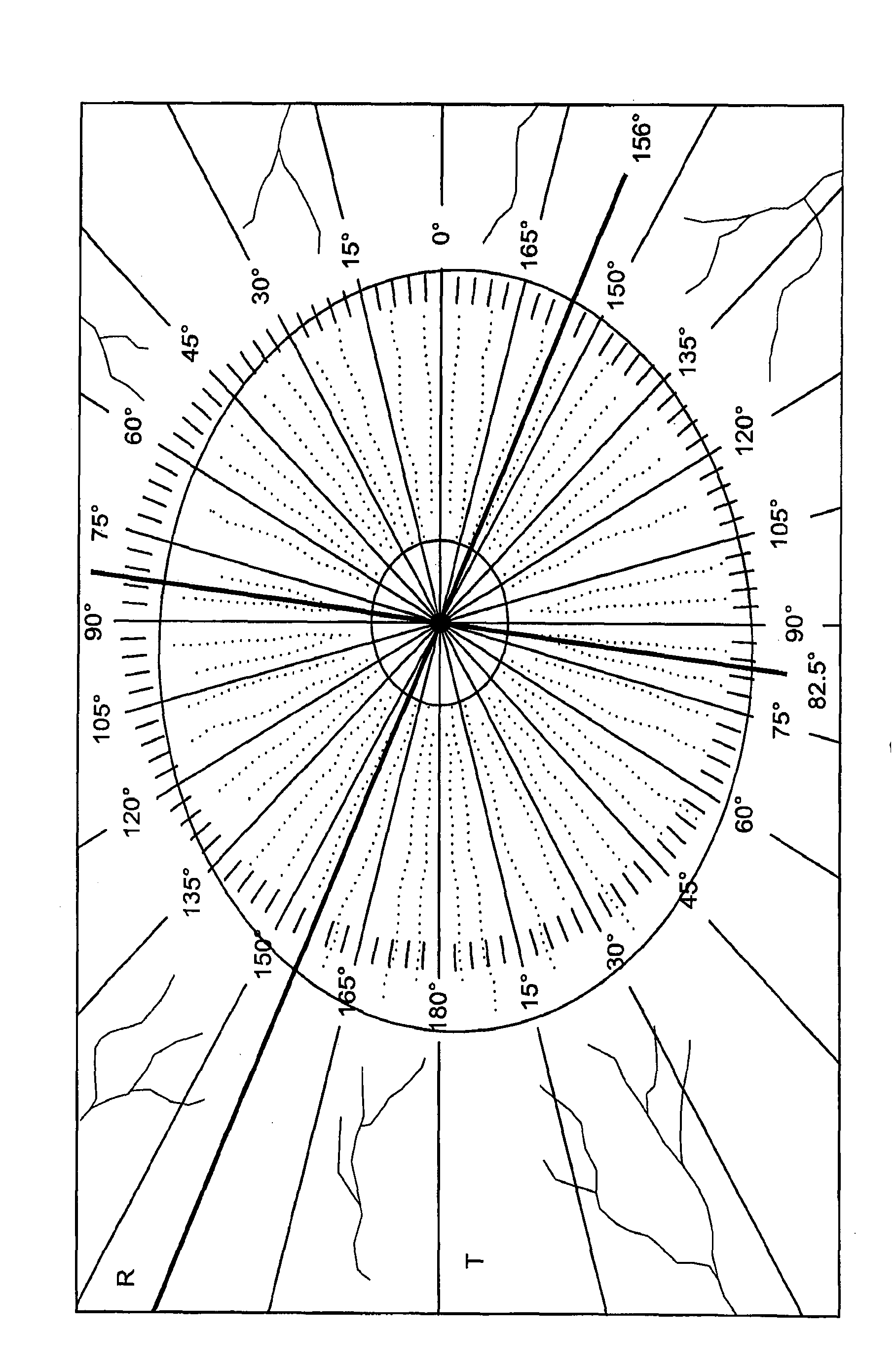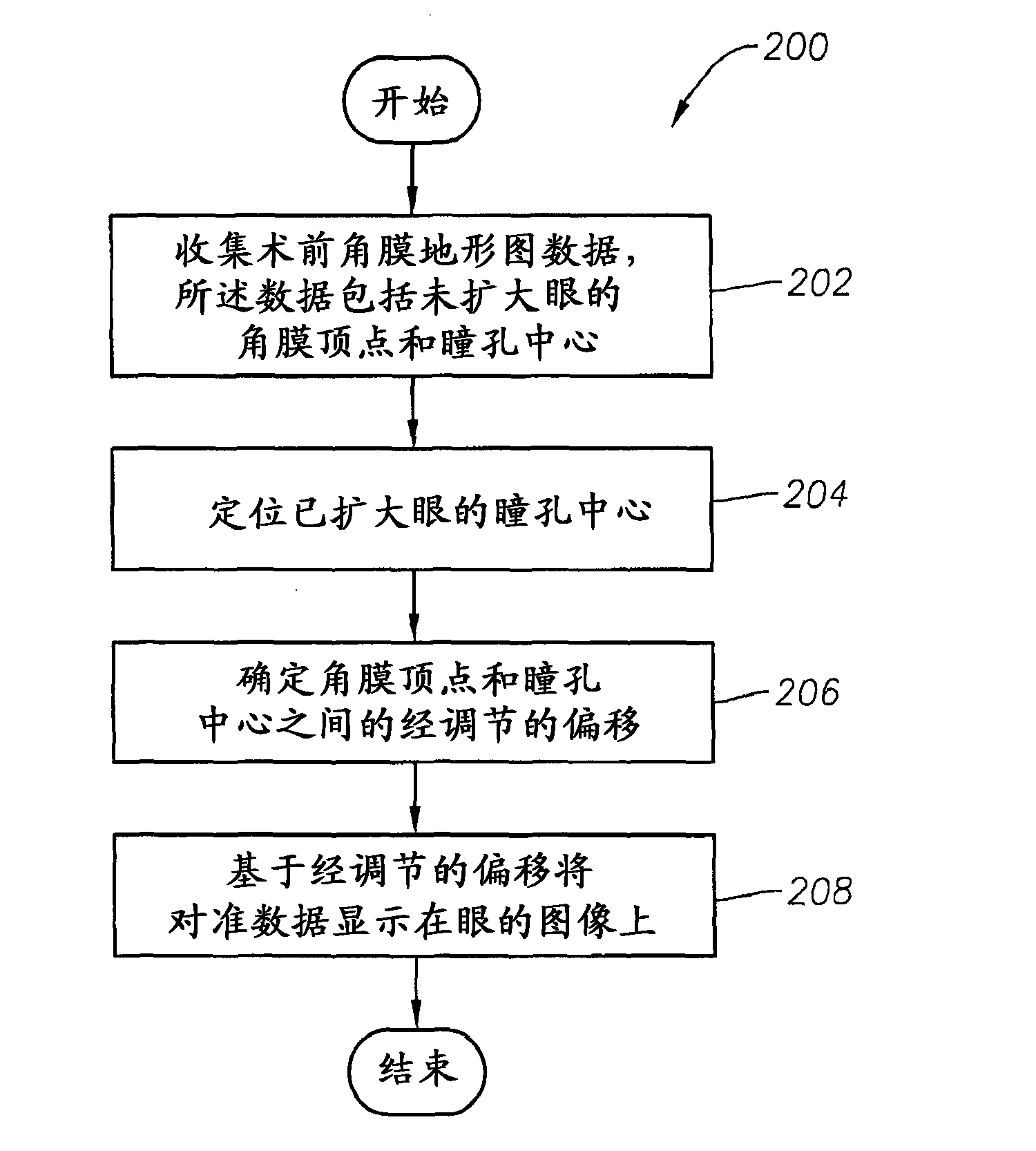Intraocular lens alignment using corneal center
A technology of corneal apex and center position, applied in ophthalmoscope, intraocular lens, application, etc., can solve the problems that the eye cannot focus or look at the target autonomously, cannot use the physiological pupil, cannot use the eye, etc.
- Summary
- Abstract
- Description
- Claims
- Application Information
AI Technical Summary
Problems solved by technology
Method used
Image
Examples
Embodiment Construction
[0011] Disclosed herein are techniques for determining the location of the corneal apex of the eye and the rotational position of the eyeball in the supine position as it relates to the eye position determined during fixation on a target in the vertical sitting position of the non-anesthetized eye. Once the position of the corneal apex is determined, two or more reference points can then be used along with the corneal apex using the iris, sclera, or conjunctival or extrascleral tissue of the eyeball to create two or more reference points, thus allowing the angle of a particular meridian on the ocular surface (in degrees), which in turn allows accurate determination of the rotational position of the intraocular lens inside the eye to correct for astigmatism or other asymmetric optical aberrations.
[0012] As noted above, anatomical placement of the intraocular lens (IOL) in the capsular bag or ciliary sulcus more closely aligns with the corneal apex. Furthermore, IOLs are ofte...
PUM
 Login to View More
Login to View More Abstract
Description
Claims
Application Information
 Login to View More
Login to View More - R&D
- Intellectual Property
- Life Sciences
- Materials
- Tech Scout
- Unparalleled Data Quality
- Higher Quality Content
- 60% Fewer Hallucinations
Browse by: Latest US Patents, China's latest patents, Technical Efficacy Thesaurus, Application Domain, Technology Topic, Popular Technical Reports.
© 2025 PatSnap. All rights reserved.Legal|Privacy policy|Modern Slavery Act Transparency Statement|Sitemap|About US| Contact US: help@patsnap.com



